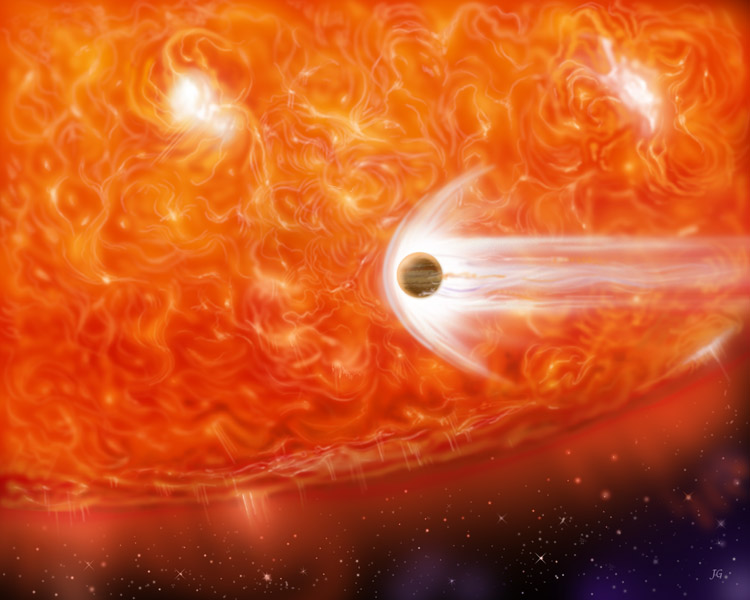| Description: | The possible thermal and non-thermal atmospheric mass loss of 57 known transiting exoplanets around F, G, K, and M-type stars over evolutionary time scales are discussed. For stellar wind induced mass loss studies the position of the pressure balance boundary between Coronal Mass Ejection (CME) and stellar wind ram pressures and the planetary ionosphere pressure for non- or weakly magnetized gas giants at close orbits is estimated. It is shown that the ionospheric pressure can balance the colliding dense stellar wind and average CME plasma flows at distances which are above the visual radius of weakly or non-magnetic “Hot Jupiters”, resulting in mass losses less than 2 % during evolutionary time scales. Most of the transiting low density gas giants at orbital locations of less than 0.025 AU, like WASP-12 b or CoRoT-Exo-1 b lose about 6-12.5 % and 1–3 % of their initial mass thermally, respectively. Most of the other transiting exoplanets in the sample experience negligible thermal mass loss (less than 2 %) during their life time and thermal escape is most likely not responsible for the non-detection of Jupiter- and sub-Jupiter-mass exoplanets at orbital locations between 0.02 – 0.035 AU. However, it will be shown that the ram pressure of fast CMEs cannot be balanced by the ionospheric plasma pressure at orbital distances between 0.02–0.1 AU. Therefore, collisions between hot gas giants and fast CMEs may result in large atmospheric mass loss, which could influence the mass evolution of gas giants with masses less than that of Jupiter. Furthermore the orbital distance where exosolar gas and ice giants will lose their hydrogen envelopes so that their cores may remain will be discussed. |

